When your Wikipedia entry says that your best known role was in Howard’s Way, it’s a pretty good indication that your acting career hasn’t really gone the way you would have hoped.
Placed in the BBC vault in the file marked ‘Seemed like a good idea at the original read-through’ (alongside Eldorado and Albion Market) Howard’s Way was obviously attempting to be the UK’s answer to Dallas – an over-the-top, 80’s power dressing drama series, although the setting of a boat yard near Southampton didn’t ring with as much glamour as the oil industry in Texas did.
Howard’s Way was clearly intended to be taken seriously, but could quite easily be viewed as a comedy; in fact it made Acorn Antiques look like it was written by Harold Pinter. The plotlines, scripts and acting (oh especially the acting) were all terrible – not so much ‘so bad it’s good’ as ‘so bad it’s absolutely mesmerising’ - its ratings success can only have been due to people tuning in week after week to see just how much worse it could get.
The fictional town of Tarrant was home to a hotbed of dodgy dealing, torrid affairs and steely glares across boardroom tables. Starting off the action were Tom (Maurice Colbourne) and Jan Howard (Jan Harvey – could she not remember a name that wasn’t her own?)- a married couple who would have had more chemistry between them if one had been in a coma - and their adult children Leo (Edward Highmore), a master of the wobbling bottom lip and absolutely no facial expressions no matter what situation he was in; and Lynne (Tracey Childs) who perpetually pouted and ran out of rooms in states of high emotion. The first series kicked off with us witnessing Tom telling his family that the aircraft engineering company that had employed him for twenty years had just let him go so he was now unemployed. This was the chance for his Jan, Leo and Lynne to give it their best open-jawed shocked expressions. Unsuccessfully as it turned out.
A sailor in his spare time, when Tom took his boat ‘The Flying Fish’ to the financially-struggling Mermaid Boatyard for repair curmudgeonly owner Jack Rolfe (Glyn Owen) decided that Tom could be the ideal person to help get his beloved business back on an even keel (a boat-related pun klaxon should be sounding about now). Tom quickly got on board with the partnership idea, but had to use his redundancy money, savings and shares, as well as selling his boat to be able to invest in the yard. When you watched the dead-eyed interaction between Tom and Jan you wouldn’t really be at fault if you predicted that their marriage wouldn’t last under any circumstance, but his ‘putting all the money into a very risky venture without talking it through with his wife first’ idea was the start of the crack that eventually broke it.
So the basis of the programme was set; Tom and Jack started the Mermaid’s rehabilitation, albeit with very different ideas of how to build boats and Jack’s drinking habit to contend with. But were the administrative difficulties of a Hampshire boatyard enough to keep an audience returning week after week? Of course not; viewers in the 1980s needed more than that to keep them interested – they needed over-made up women with hugely-coiffured hair staring heatedly across rooms at shiny perma-tanned men! Which was lucky, because Howard’s Way had lots of them…
Most of the romantic trysts displayed in Howard’s Way were underwhelming, for a variety of reasons. If you were attempting to recreate drippy Leo Howard’s dalliance with the even wetter Abby Urqhart (Cindy Shelley) through the medium of sound (you might be) you could easily achieve this by slowly dropping wet fish onto a pile of other wet fish. And why would Jack’s ‘sexy’ daughter Avril Rolfe (Susan Gilmore) be remotely attracted to Tom ‘I can read my lines in either a pained whisper or an husky shout, that’s your lot’ Howard other than the fact that it provided her with a distraction from her Dad’s booze-addled moaning? The most vomit-inducing pairing however, had to be Jan Howard’s torrid affair with her then-boss (and by far the show’s most cringeworthy character) Ken ‘Chest hair and a medallion, mmmm’ Masters (Stephen Yardley). It was the 80s, so it’s not entirely his fault, but Ken was one of those men who you imagine believed that a single red rose at dinner and the promise of black silk sheets were all he really needed to get a woman back to his place – no need for a personality or anything pointless like that. If you’ve already seen the scene where Ken and Jan feed each other a strawberry using only their mouths then you’ll already have it indelibly marked on your eyeballs, just as if you’d stared at an uncovered light bulb for a bit too long. If you haven’t viewed it then consider yourself lucky and move on. It’s for your own sanity, believe me.
Over the show’s six series (78 episodes of 50 minutes each – that’s nearly 4000 minutes of woodenly-acted boatyard action!) many characters were interwoven through the plotlines. Dastardly powerhouse Charles Frere (Tony Anholt) had women spilling out of his pockets, Polly (Patricia Shakesby) quivered on staircases whilst her husband Gerald (Ivor Danvers) hid his sexual leanings in their marriage of convenience and when Laura Wilde (Kate O’Mara) turned up in the last two series as a businesswoman, a little piece of Dynasty settled (ruthlessly, obviously) in Tarrant.
As with all good on-going dramas, Howard’s Way left its episodes on sharp-intake-of-breath cliffhangers - actually I’m being kind here as you could generally see what was going to happen a mile off, kind of like in Casualty when the dad of the family hugs his wife and children and says ‘I’ve never been happier’ before getting into his car and driving to work on an icy morning. Tragedy was never far away, with a plane crash, a power boat accident and a water skiing catastrophe accounting for many of the hysterical sobbing fits seen throughout its run – infidelity and caddish male behaviour the reason for the others.
Howard’s Way first began to hook the nation on Sunday evenings on 1 September 1985. It was created by Gerald Glaister, and whilst we’ve already made the comparison between the show and its glamorous US relative Dallas, it was actually following on the coattails of another Glaister production. The Brothers was a peek into what sounds like the thrilling world of a family who ran a haulage company, and many of the themes involving their personal and business fortunes were continued on into Howard’s Way. After this show, Glaister went on to create Trainer, which was a peek into the world of horse racing (I never saw it but I bet it featured the personal and business fortunes of an overly-dramatic family).
Another memorable feature of Howard’s Way was the theme music. Simon May, who came up with the stirring tune that was set over the opening titles of (surprisingly) boats racing on the water, is also responsible for the dirge that is the Eastender’s theme tune, as well as a best-selling single in 1976 that featured in Crossroads. In 1986 somebody had the bright idea of adding lyrics, and Marti Webb took ‘Always There’ to number 13 in the UK charts – it packed the same emotional impact as Anita Dobson’s ‘Anyone Can Fall in Love’ did the same year; i.e. none whatsoever.
Maurice Colbourne died unexpectedly during the production of series five, leading to quickly rewritten episodes which explained his sudden disappearance, and the beginning of the end for Howard’s Way. A sixth series was produced to allow a neat and tidy ending for all the storylines, and, particularly apt for a programme that couldn’t have represented any other decade apart from the 1980s, the final episode ever was broadcast on 25 November 1990. Three days later, Margaret Thatcher resigned. I’m not saying the two are connected, but perhaps the thought of The Mermaid Boatyard closing its doors forever affected her more deeply than was previously thought.
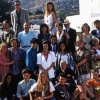
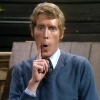
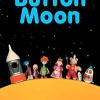

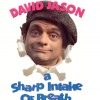
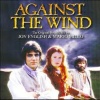
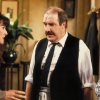
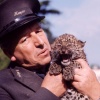
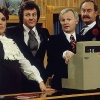
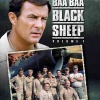
Do You Remember Howard's Way?
Do You Remember Howard's Way?